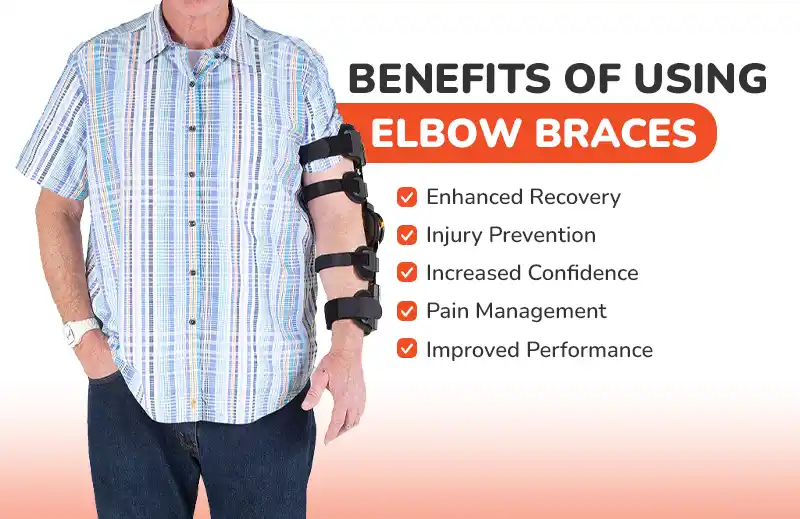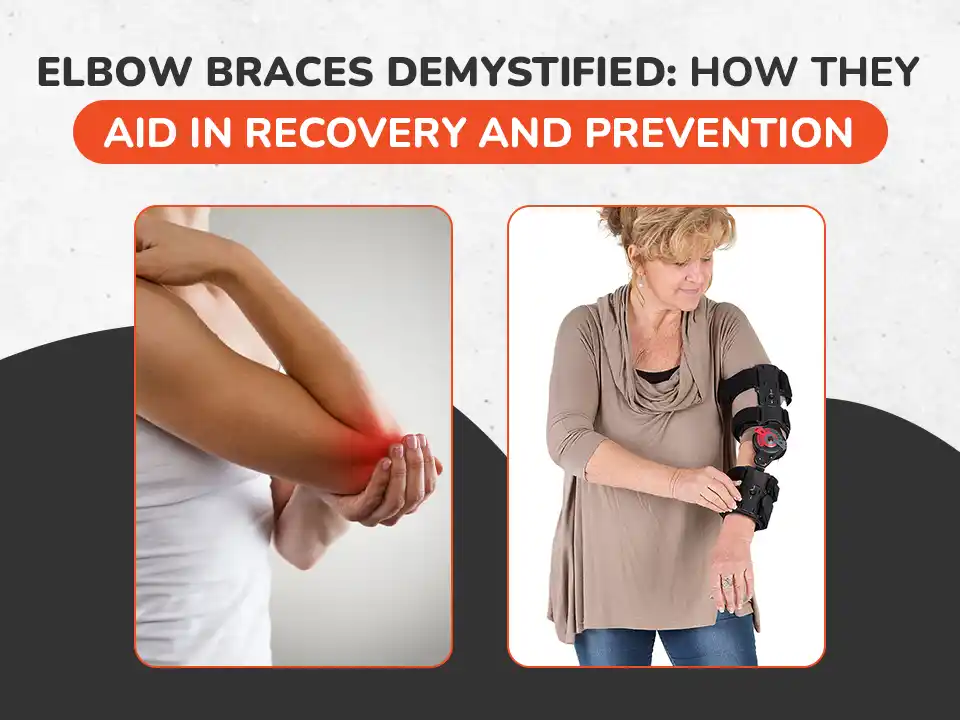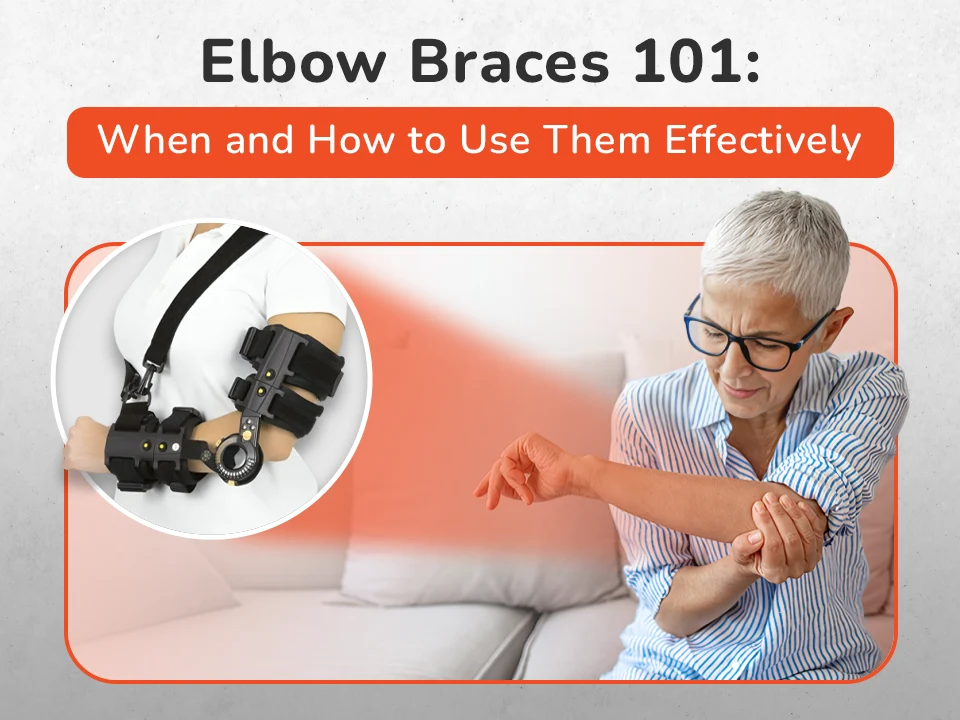Elbow Braces Demystified: How They Aid in Recovery and Prevention
Elbow injuries, with their ability to sideline athletes and disrupt daily activities, are more than just a minor inconvenience—they’re a significant barrier to maintaining an active, healthy lifestyle. Enter the world of elbow braces, where support meets science to offer solace to those afflicted by elbow pain and discomfort. From the tennis courts to the office, elbow braces have emerged as pivotal in aiding recovery and preventing further injuries, making them essential in health and wellness. This article aims to demystify elbow braces, shedding light on how they work, their benefits, and their crucial role in recovering from and preventing elbow injuries. As we navigate through the intricacies of these supportive devices, we’ll explore the types available, how to select the right one for your needs, and the best practices for wearing them, ensuring you’re equipped to effectively protect one of your body’s most vital joints.
Introduction to Elbow Braces
Elbow braces, in the grand scheme of orthopedic aids, occupy a vital yet often understated position. Their role transcends mere support, offering a comprehensive suite of benefits aimed at one of the most dynamically used joints in the human body—the elbow. Given the elbow’s critical function in virtually every arm movement, it’s no surprise that it’s prone to various injuries, from the acute pain of an unexpected sprain to the lingering discomfort of overuse syndromes like tennis elbow or golfer’s elbow. These conditions hamper performance and daily activities and can lead to prolonged periods of discomfort and immobilization. This narrative seeks to uncover the pivotal function elbow braces serve in the convalescence and deterrence of elbow injuries, underscoring their importance in preserving the health and functionality of the elbow joint. By offering insight into the selection, application, and benefits of elbow braces, this article aims to guide those navigating the complexities of elbow joint care.
Understanding Elbow Injuries
The elbow, a marvel of biological engineering, enables a wide range of motion, from flexion and extension to forearm rotation. However, this versatility comes at a cost, rendering the joint susceptible to a spectrum of injuries. Acute injuries such as sprains, strains, and fractures can result from sudden impacts or awkward movements. At the same time, chronic conditions like tendinitis, bursitis, and epicondylitis (tennis or golfer’s elbow) emerge from repetitive stress and overuse. The complexity of the elbow’s anatomy, with its interplay of tendons, ligaments, and bones, necessitates a nuanced understanding of its vulnerabilities. Early recognition and comprehension of elbow injuries are paramount in implementing effective treatment strategies. This knowledge empowers individuals to take proactive steps to prevent injury exacerbation and avoid potential long-term complications.
The Role of Elbow Braces in Recovery
Elbow braces ascend beyond mere orthopedic accessories, asserting themselves as indispensable allies in the healing journey. Their design and function are tailored to address the multifaceted needs of an injured elbow, offering a sanctuary for the joint to recuperate while mitigating the risk of further damage. Here’s a closer examination of how elbow braces facilitate recovery:

- Stabilization: By immobilizing the elbow joint, braces provide a protective barrier against movements that could aggravate the injury. This enforced stillness is crucial in the initial phases of healing, ensuring that the joint remains secure as the body initiates the repair process.
- Compression: Elbow braces apply gentle pressure across the injured area, which is instrumental in reducing swelling—a common and painful symptom of many elbow injuries. This compression also enhances blood circulation to the damaged tissues, delivering essential nutrients and oxygen for repair and recovery.
- Pain Relief: One of the immediate benefits of wearing an elbow brace is alleviating pain. By offloading some of the stress and strain from the injured areas, braces can significantly reduce discomfort, making the recovery period more bearable.
- Functionality: Unlike complete immobilization techniques that can lead to stiffness and reduced joint function, elbow braces are designed to allow for some degree of movement. This controlled mobility is vital in preventing joint stiffness, facilitating a gradual return to normal function, and promoting the healing of soft tissues through gentle, therapeutic movements.
In summary, elbow braces are the confluence of protection, pain management, and recovery enhancement. Their strategic application in the aftermath of elbow injuries embodies a proactive approach to healing, emphasizing restoring function and preventing future injuries. Through stabilization, compression, pain relief, and functionality, elbow braces provide a comprehensive support system for the injured elbow, steering the recovery journey toward a swift and effective resolution.
Types of Elbow Braces
The journey to finding the perfect elbow brace is paved with understanding the nuances of each type available, as they cater to varying degrees of injuries and support needs.
- Compression Sleeves: These are the go-to option for those experiencing mild discomfort or looking to prevent elbow injuries during activities. Made from stretchable materials, compression sleeves envelop the elbow, providing uniform support that enhances blood circulation, reduces swelling, and mildly stabilizes the elbow joint. Ideal for daily wear, they offer a discreet solution that can easily be worn under clothing.
- Strap Braces: Designed with a focused approach, strap braces are adept at targeting specific problem areas, such as the forearm’s tendons, offering relief from the grip of conditions like tennis elbow or golfer’s elbow. The strap mechanism allows for adjustable compression directly over the tendon, alleviating stress and facilitating healing without restricting overall elbow movement. This targeted support makes them a favorite among athletes and individuals with specific tendon issues.
- Hinged Braces: Hinged braces offer a robust solution for those recovering from surgery or severe elbow injuries. These braces come equipped with metal or plastic hinges that limit the elbow’s range of motion, protecting the joint from movements that could impede healing. While bulkier than their counterparts, their support and protection are unmatched, making them indispensable in the early stages of recovery from significant injuries.
Benefits of Using Elbow Braces
Elbow braces are more than just supports; they are instrumental in navigating recovery, enhancing athletic performance, and living an active life without the shadow of elbow pain.

- Enhanced Recovery: The primary boon of elbow braces is their ability to expedite healing. By stabilizing the elbow joint and mitigating stress on injured areas, braces facilitate an environment conducive to recovery, enabling individuals to resume their daily routines confidently.
- Injury Prevention: Especially in sports or activities that place high demands on the elbow, braces act as a preventive shield, distributing stress evenly and absorbing shocks that could lead to injuries. This preventive measure is key to avoiding recurring injuries plaguing many athletes and active individuals.
- Increased Confidence: An invaluable sense of security comes with wearing an elbow brace, especially for those returning to activities post-injury. This confidence, rooted in the knowledge that their elbow is protected, allows for more engaged and fearless participation in desired activities.
- Pain Management: Elbow braces are pivotal in managing pain levels during recovery. They alleviate discomfort by providing targeted compression and support, making the rehabilitation journey less daunting and more manageable.
- Improved Performance: For athletes, the difference between sitting on the sidelines and being in the game can often come down to the support of an elbow brace. The right brace protects against injuries and can enhance performance by stabilizing the joint and optimizing movement patterns, ensuring that elbow issues don’t dictate the limits of their potential.
Read More: Elbow Braces 101: When and How to Use Them Effectively
Essentially, the strategic use of elbow braces encompasses a comprehensive approach to elbow health, addressing everything from injury recovery and prevention to performance enhancement. By understanding the types and benefits of elbow braces, individuals can make informed decisions that align with their health goals, ensuring their elbows remain strong and resilient against the demands of sports, work, and daily activities.
Choosing the Right Elbow Brace
Navigating the process of selecting the ideal elbow brace is akin to customizing a personal recovery plan—it necessitates a deep understanding of your specific situation, including the nature of your injury, the level of support required, and considerations for your comfort. The myriad options, each designed to address different aspects of elbow health, highlight the importance of making an informed choice. Consulting with a healthcare professional becomes indispensable in this context. They can offer expert advice based on a thorough assessment of your condition, guiding you toward a brace that aligns with your recovery goals or prevention strategies. The fit of the elbow brace is paramount; a well-fitted brace should feel like a supportive embrace around your elbow, snug enough to provide effective support without impinging on circulation or causing undue pressure. Achieving this balance is crucial for the brace to fulfill its role without introducing new discomforts or hindering healing progress.
How to Wear Elbow Braces Correctly
The efficacy of elbow braces hinges significantly on their correct application. A brace worn too loosely may fail to provide the necessary support, while one that’s too tight could restrict blood flow and exacerbate discomfort. The initial fitting might require adjustments to find that perfect snugness that supports without constricting. Over time, as the swelling in the injured area may reduce or your activity levels change, further adjustments to the brace might be necessary. It’s important to regularly reassess the fit of your brace and make modifications as needed to ensure continued effectiveness and comfort. This adaptability maximizes the brace’s therapeutic benefits and ensures that the recovery process is as smooth and efficient as possible.
Caring for Your Elbow Brace
Proper care is essential to ensure your elbow brace remains a reliable companion throughout your recovery journey or as part of your injury prevention toolkit. Per the manufacturer’s instructions, regular cleaning is critical to maintain hygiene and prevent the build-up of sweat, bacteria, and odors. Most braces can be hand-washed with mild detergent and air-dried, though it’s vital to follow specific care guidelines to avoid damaging the brace’s material or structure. Routine inspections for signs of wear and tear will help identify when the brace may need to be replaced to maintain optimal support. This diligent maintenance not only extends the life of your elbow brace but also ensures it continues to provide the highest level of performance.
Elbow Braces for Active Lifestyles
An elbow brace can be a game-changer for athletes and active individuals, providing the confidence to engage in sports and physical activities with reduced risk of injury or re-injury. Understanding when and how to incorporate an elbow brace into your routine is pivotal. An elbow brace can significantly contribute to a more active and fulfilling lifestyle, whether for the proactive prevention of strain during high-risk movements or as a stabilizing support during the recovery phase. The key is to select a brace that offers the right balance of support and flexibility, enabling you to perform at your best while safeguarding your elbow from further harm.
Conclusion
Elbow braces are powerful tools in recovery and injury prevention, offering tailored support that can significantly impact one’s quality of life. Individuals are better equipped to make informed decisions regarding their elbow health with a clear understanding of the different types, benefits, and proper usage of elbow braces. Whether navigating the recovery process, engaging in athletic pursuits, or looking to avoid future elbow issues, the right elbow brace can be instrumental in achieving these goals. Healthcare professionals’ guidance in selecting and utilizing elbow braces is invaluable, ensuring that each individual can continue to lead an active, pain-free life with the support they need.






